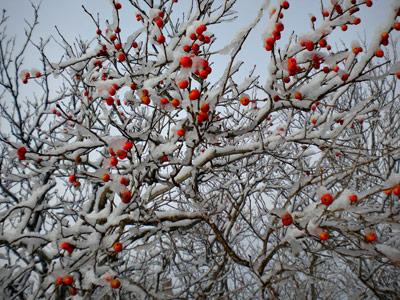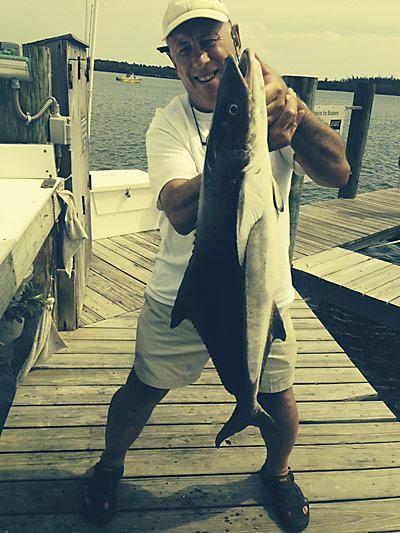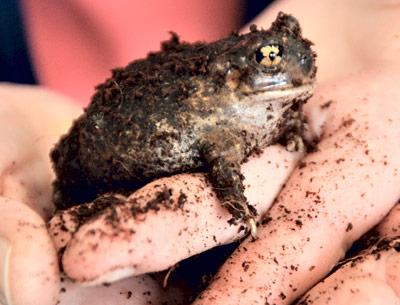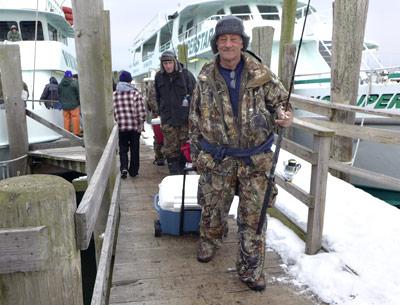Nature Notes: A Bluebird Comeback
Nature Notes: A Bluebird Comeback

In the early 1980s there were only about seven active osprey nests on the South Fork. The osprey was still on the New York State’s endangered list. But there were even fewer eastern bluebirds on the South Fork and just a pair or two on the North Fork. The state correctly made a big hullabaloo about the sparse osprey population, but did very little to encourage the recovery of the bluebird, which, ironically, at that time had already had the distinction of being New York’s official bird for decades and decades.
Several volunteer bluebird groups sprung up around the state, one of which was formed by the the South Fork Natural History Society. It had been in existence for less than a year when the late Kim Hicks of Montauk advised the club that he was building bluebird boxes of a special design developed in the Midwest, ones with a removable roof so that the box could be periodically cleaned.
Karilyn Jones of SoFo led the effort to bring back the bluebirds locally beginning in 1987 using Kim Hicks’s homemade boxes. At that time we had located two pairs of breeding bluebirds, one in Hither Woods and another in Springs near the Green River Cemetery. Don Ferris had noticed a pair there year after year.
Bluebirds prefer open country, and so under Ms. Jones’ direction we set about starting bluebird trails — one in Hither Woods, one at East Hampton Airport where a bluebird had been spotted, and one on the Sag Harbor Golf Course at Barcelona and, a year or two later, another one at the horse farm in Northwest owned by the Freemans, who own Home Sweet Home Moving and Storage on the highway in Wainscott.
The boxes were mounted on steel stakes about four or five feet above the ground along the edges of open areas and set at about 100 yards apart. The design was a good one because in the first year at least three bluebird pairs found them and nested in them. That’s the kind of encouragement we needed and more boxes and more trails were added in ensuing years. There were several volunteers tending to the boxes and keeping track of the baby bluebirds and their fledging success. Several boxes were occupied by tree swallows, a bonus, a few by house wrens, and even one or two by white-footed mice.
The boxes had to be cleaned and repaired every year and Karilyn handled that responsibility well for almost 20 years. The trails became so promising under her tutelage that early on CBS sent a videographer and a TV journalist out to record the growing population. The segment aired nationally on the weekly Sunday morning news program.
At some point, the ranks of the monitors thinned and the trails began to overwhelm the few that remained to count the young and clean the boxes. The United States Department of Agriculture, which is responsible for animals at Federal Aviation Administration-sanctioned airports, complained about the boxes at the airport. Some others were vandalized. But reports from locals who had bluebirds coming to their birdbaths regularly made the time well spent. Raccoons, however, were beginning to raid the nests and there were more and more nest failures in the latter part of the century.
The local population peaked and then began to fall. Enter Joe Guinta, a bird trip guide for New York Audubon early in the 21st century. He picked up on the raccoon problem right away and began installing raccoon guides on each nest pole. Nest failures diminished and the local bluebird population made a second comeback. In 2005, 38 baby bluebirds fledged, in 2006, 45, and the population grew and grew until 2012 when a record 143 bluebird babies joined their parents in flight. The airport trail produced almost half the fledges, 67.
By the same token, more and more bluebirds showed up here and there on Long Island during the winter bird surveys. Meanwhile, while the South Fork bluebird populations was prospering, John Potente, a dentist from the central Suffolk area, also started trails in his neck of the woods, as did many others on Long Island. Soon eastern bluebirds were no longer a thing of fantasy. They were again the official state bird with a capital B.
In 2013, notwithstanding a drop of bluebird fledges from a record 143 to 67, 29 of which were at the airport, the 15 bluebird trails and the 160 boxes serving them also produced 249 tree swallows, down from 318, 169 house wrens, up from 91 and, for the first time, two crested flycatchers. This last species is famous for including a molted snakeskin in its nest cavity, at times hanging down from the entry hole, not always easy to come up with. No snakeskin, but Jon did find a strip of plastic that apparently served as a snakeskin mimic.
It is no easy job tending to all those boxes on all those trails year after year. But the rewards are great: two or three pairs in 1987 more than a 100 last year. Tree swallows count mosquitoes among their prey. In the early fall when migrating through, they can often be seen 100 or more at a time, adults and young, perched near salt marshes or hunting over them.
I’m sure Joe and SoFo would be happy to accommodate a few more dedicated volunteers in 2014. If you are interested call the South Fork Natural History Museum in Bridgehampton.
Larry Penny can be reached with questions or comments at [email protected].



